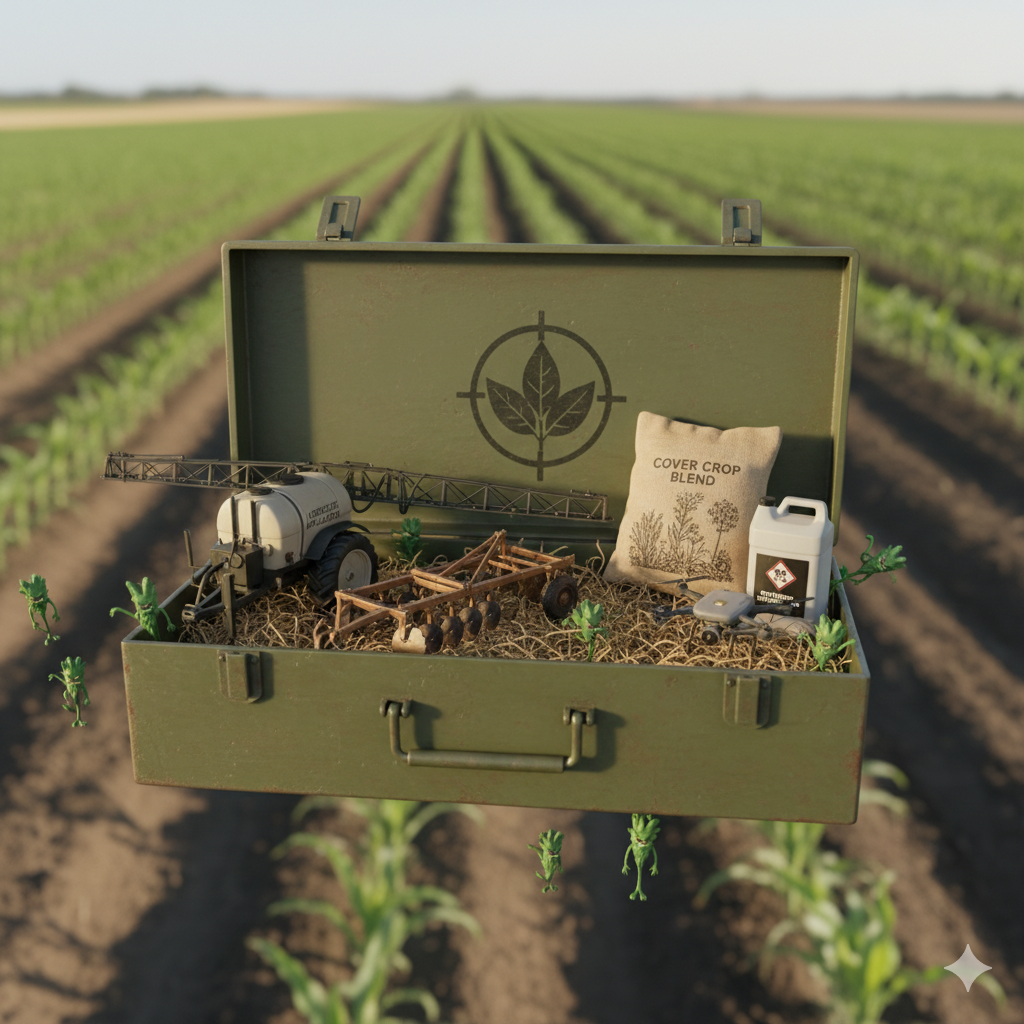
Weeds continue to be increasingly challenging each year with herbicide resistance concerns on the rise, persistent challenging environmental conditions, and further spreading across the state (particularly with waterhemp).

Weeds continue to be increasingly challenging each year with herbicide resistance concerns on the rise, persistent challenging environmental conditions, and further spreading across the state (particularly with waterhemp).
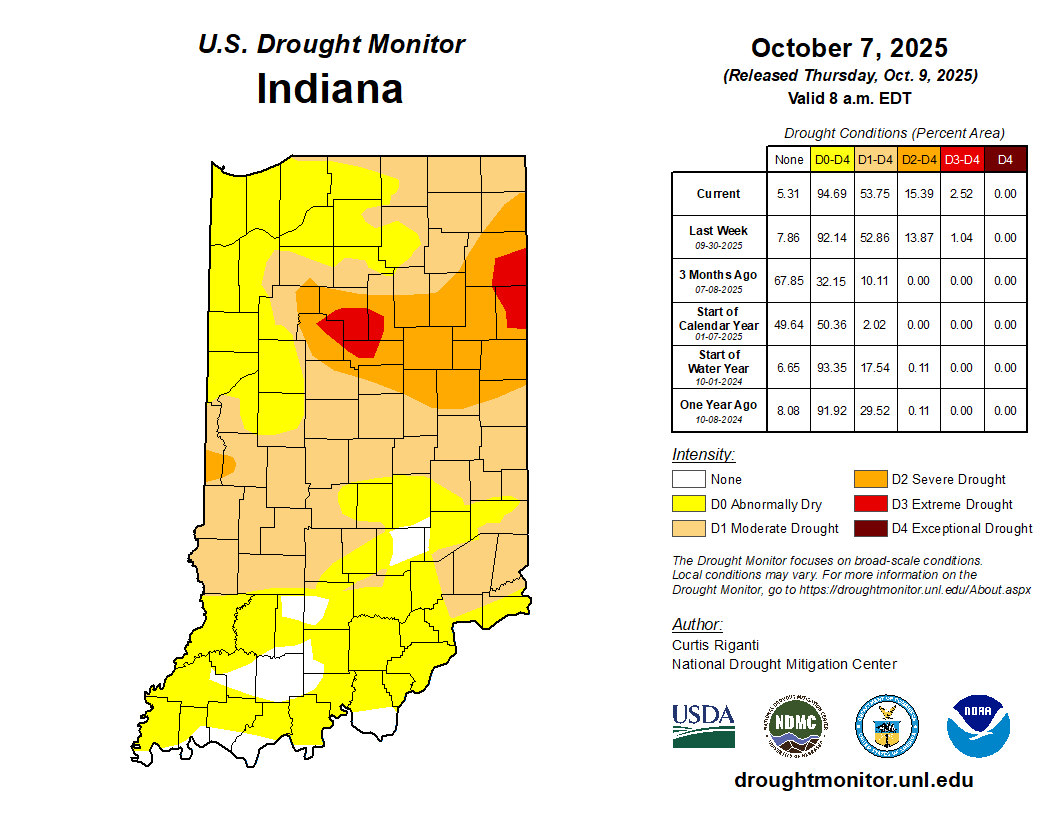
Prior to the rain event October 6-7, 2025, most of Indiana had only received between 0.5” – 2.5” of precipitation over the past 30 days.

Fall and drought have been nearly synonymous in recent years; 2025 is no different.

The Midwestern Regional Climate Center (MRCC) has launched a new version of cli-MATE, its main online portal for United States climate data, analyses, statistics, maps, graphics, and other information.
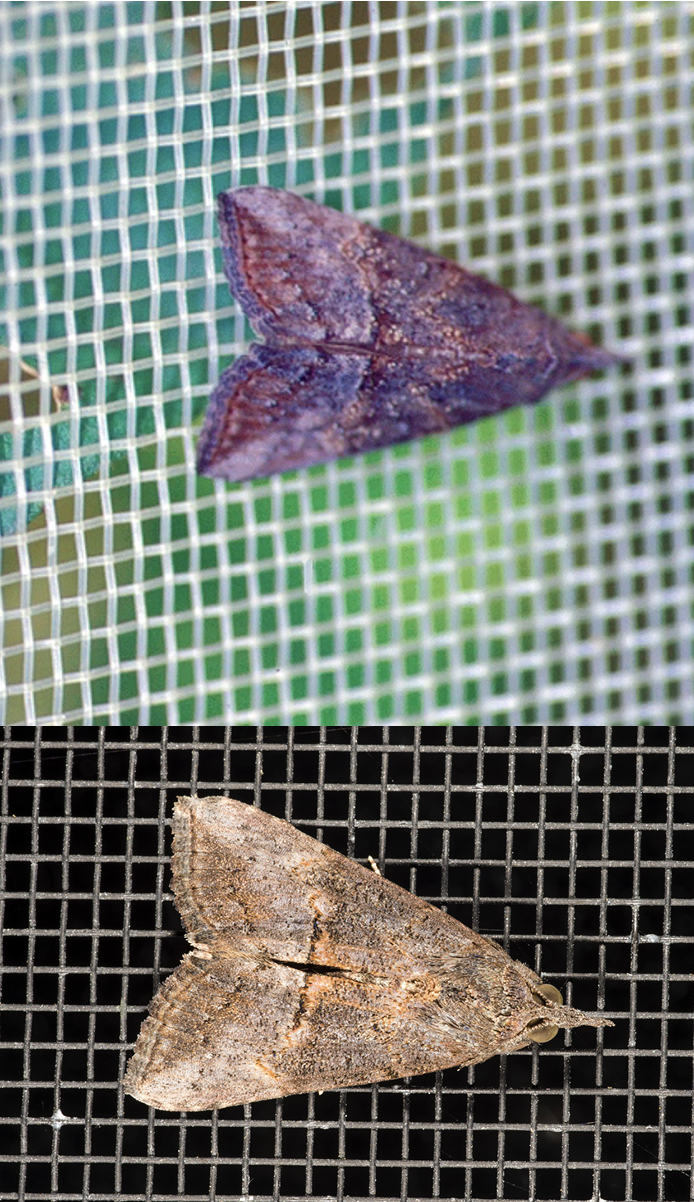
Most likely you have seen some darkly colored moths flying around farms, homes, and yards, especially to lights at night.
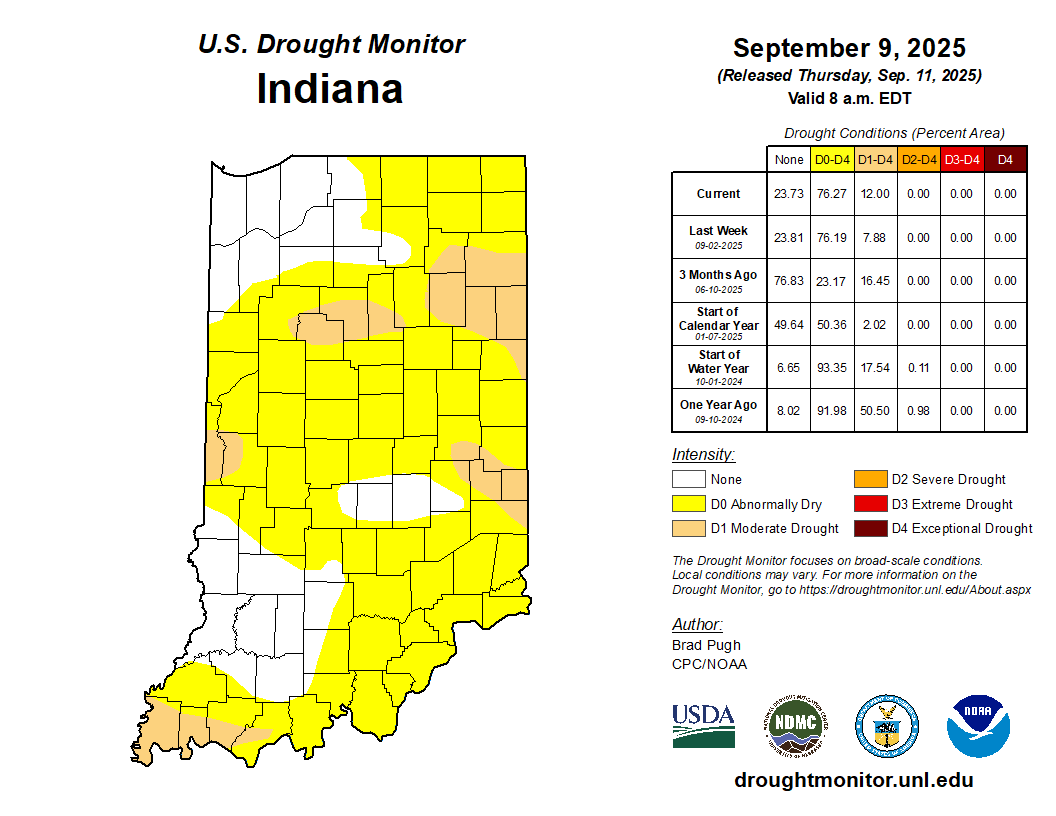
The last week has caused many to struggle with whether to turn the heat on inside.
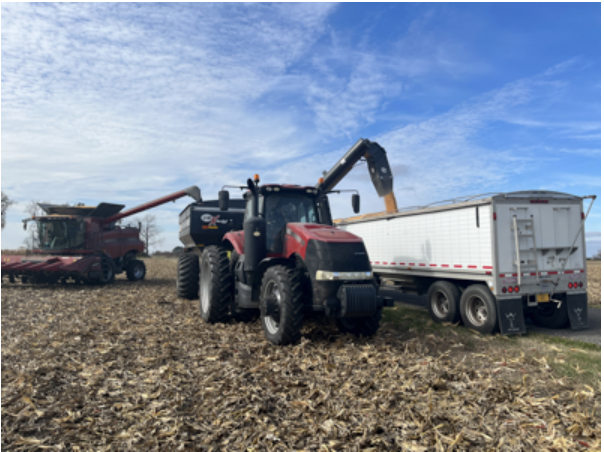
Corn grain is composed of dry matter (the important stuff) plus a certain amount of water. In other words, some of the “grain” weight that farmers sell to the grain buyer is actually water, not dry matter.

In Indiana, five ear rots can lead to mycotoxin production in corn.

It seems not too long ago farmers were planting the fields. Summer is over, it’s fall and harvest is already underway in the Midwest. The USDA’s National Agricultural Statistics Service (NASS) corn and soybean production forecast published on August 12 reported a 13% increase in corn production from 2024, forecasted at 16.7 billion bushels. Soybean production was reported to decrease by 2% from 2024, forecasted at 4.29 billion bushels. Which ever way we look at it, now is the time to make sure that all the hard work put into field preparation, planting good seeds and managing the crop to this point reap dividends by securing the harvest. This article provides some reminders of things to plan for and do as you harvest and bin your crop. First of all, ensure moisture meters used on the farm are calibrated prior to use. It is advisable to check your moisture meter[Read More…]
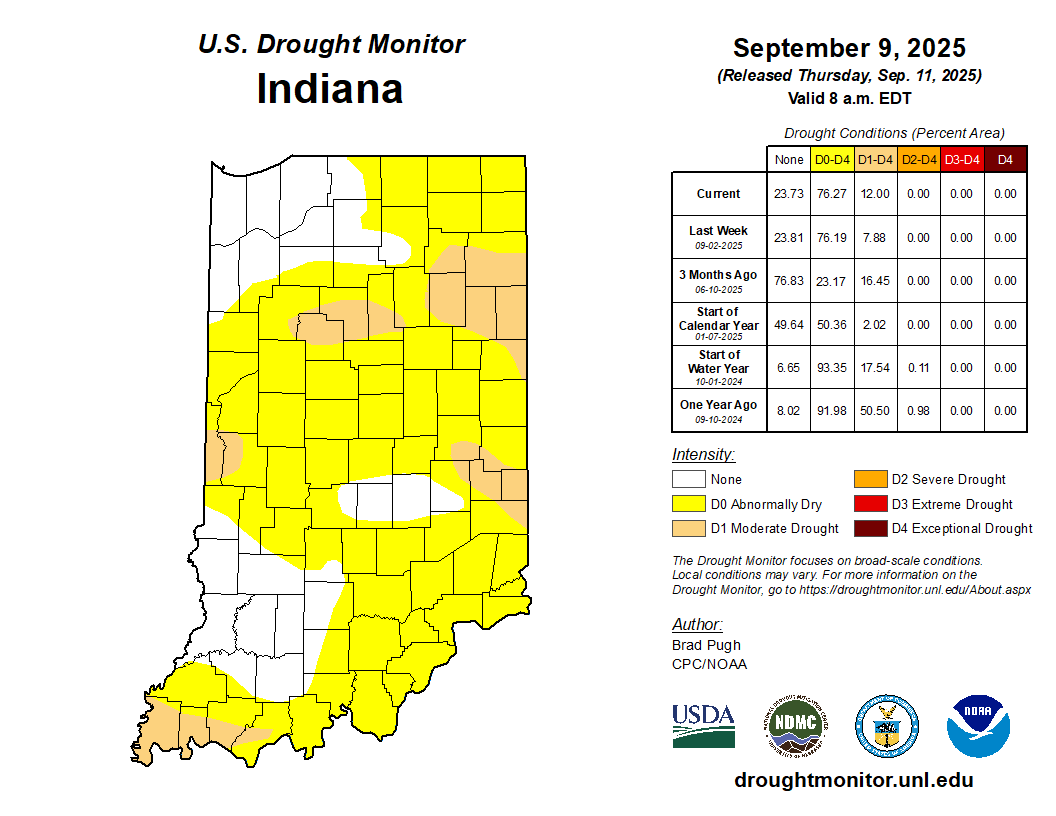
The last week has caused many to struggle with whether to turn the heat on inside. Mornings have been quite chilly, and I am guessing several readers may have also struggled with the decision to wear a jacket as they started their workday. These are tough decisions, no doubt. Several data sources have suggested we have had at least 2 weeks of consecutive below-average daily mean temperatures. While not a record, this is certainly noticeable! Perhaps we are hoping those tomato plants will produce just a few more tomatoes. Is it mum season, already? The good news – for those not quite ready to say goodbye to warm days, not needing coats, and garden delights – is warm temperatures are expected to return. Daily high temperatures are already in the 80s and Indiana is likely to see temperatures in the mid-90s by next week. There is significant confidence that this[Read More…]
© 2025 Purdue University | An equal access/equal opportunity university | Copyright Complaints | Maintained by Pest&Crop newsletter
If you have trouble accessing this page because of a disability, please contact Pest&Crop newsletter at luck@purdue.edu.